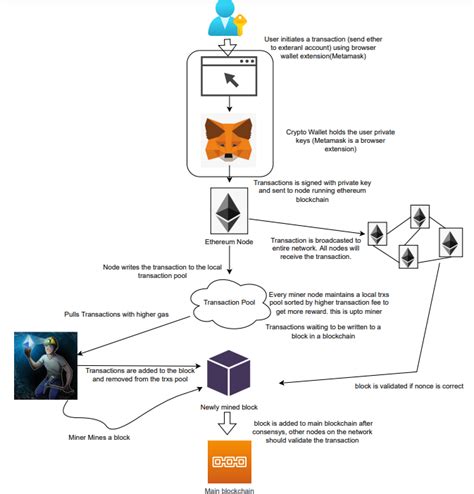Ethereum: Is Block Verification Getting Harder as the Blockchain Grows?
As the Ethereum blockchain continues to grow, one of its most complex processes is block verification. This fundamental aspect of the blockchain has long been a topic of debate among developers and users alike. In this article, we’ll explore why block verification is becoming increasingly difficult as the blockchain grows.
Basics: Block Verification
In a blockchain network like Ethereum, each block contains a set of transactions that are verified using a consensus mechanism, such as Proof of Work (PoW) or Proof of Stake (PoS). The block verification process involves verifying that all transactions in a block are valid and that the network agrees on the state of the blockchain. This is done through a decentralized computer system called a miner.
The Role of Hash Functions
To ensure the integrity and security of the blockchain, a hash function is used that creates a unique digital fingerprint for each block. This hash function takes the contents of a block (i.e., all transactions) as input and produces a fixed-length string that represents the “hash” of the block. The hash function is deterministic, meaning that it always produces the same output given the same inputs.
As the blockchain grows, the number of transactions increases exponentially. Each new block contains all previously valid transactions from previous blocks, meaning that multiple copies of each transaction are stored on the network. This leads to a scenario in which the hash function must be able to process and verify millions of transactions per second.
Problem: Scalability Limits

In 2015, Vitalik Buterin, one of the co-founders of Ethereum, introduced a hard fork called Ethereum Classic (ETH Classic). The goal was to increase the scalability of the network by introducing proof-of-stake (PoS) instead of proof-of-work (PoW), which was previously the consensus mechanism. However, this decision turned out to be a double-edged sword.
In PoW, miners compete to solve complex mathematical puzzles, using powerful computers to verify transactions and create new blocks. This process requires significant computing power and energy resources. In contrast, PoS allows validators to earn rewards by “staking” their own digital coins, rather than competing to mine.
To meet the increased demand for verification services, the Ethereum network has become increasingly congested. The increase in block size has led to:
- Increased latency: As blocks get larger, it takes longer to verify them and add them to the blockchain.
- Higher transaction fees: To compensate for the increased computational power of miners, the fee for each block is now significantly higher than before.
- Reduced scalability: Increased network load reduces the rate at which blocks can be created, making it difficult to support widespread adoption.
The bottom line: Block verification is getting harder
As the Ethereum blockchain grows in size and complexity, the process of verifying blocks becomes increasingly difficult. While increases in computational power have reduced validation times, increasing network congestion and increased demand for processing resources have created a challenging environment for both miners and validators.
To address these issues, developers are exploring new consensus mechanisms such as sharding and sidechains that can help alleviate scalability constraints. However, it is clear that Ethereum needs to make significant improvements in this area if it is to promote widespread adoption and maintain its position as a leading blockchain platform.
In summary, block verification is a complex process that grows exponentially with each new block added to the Ethereum network.
